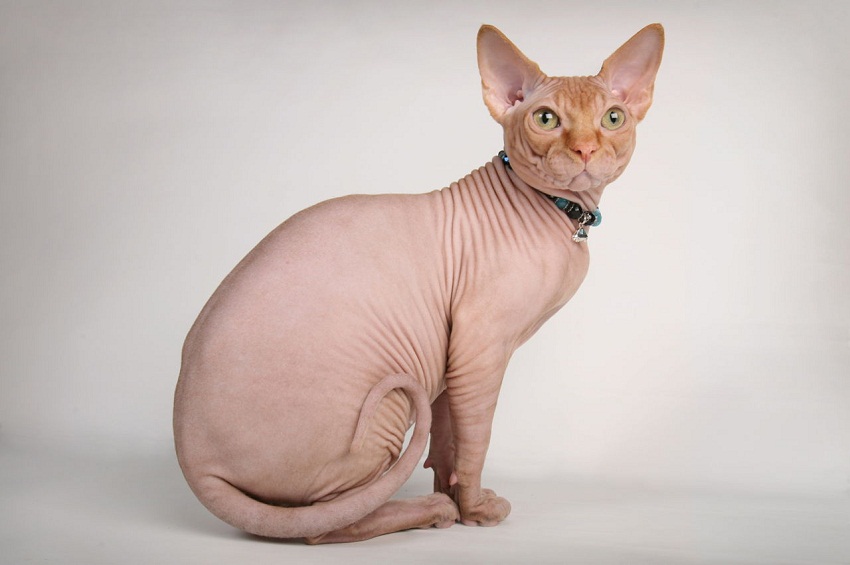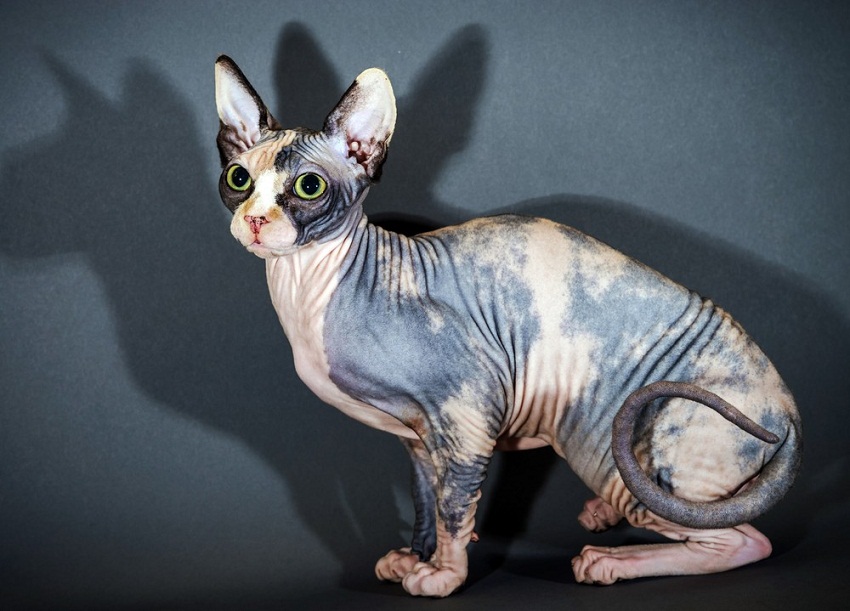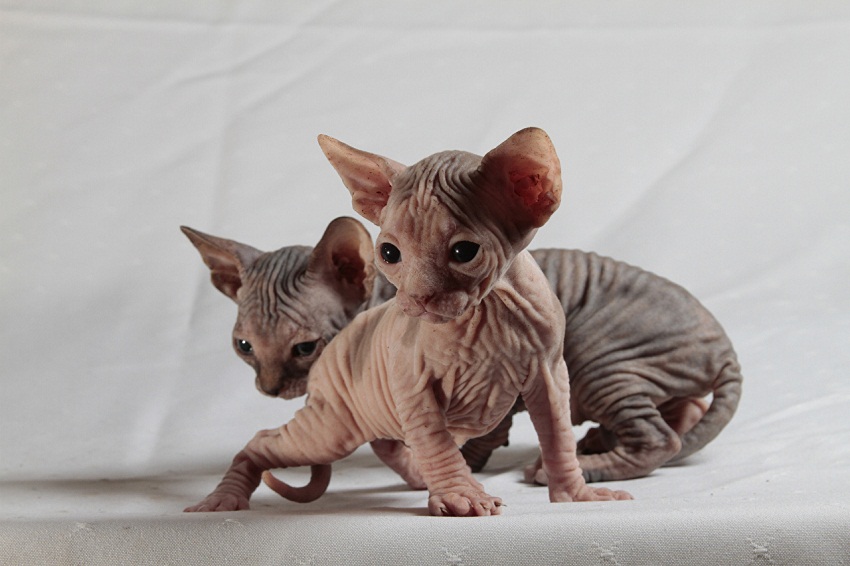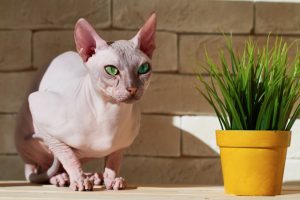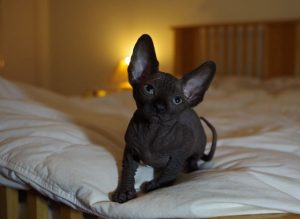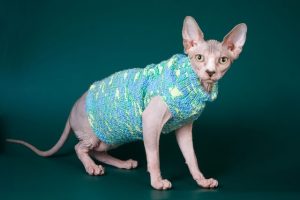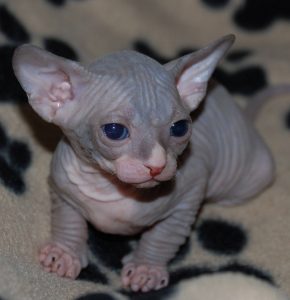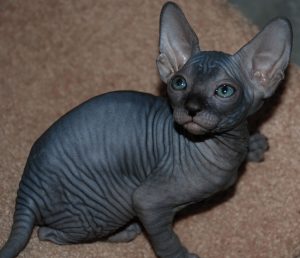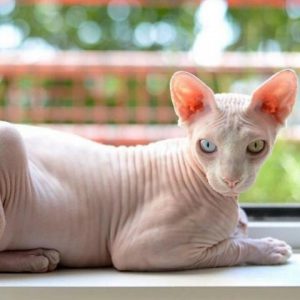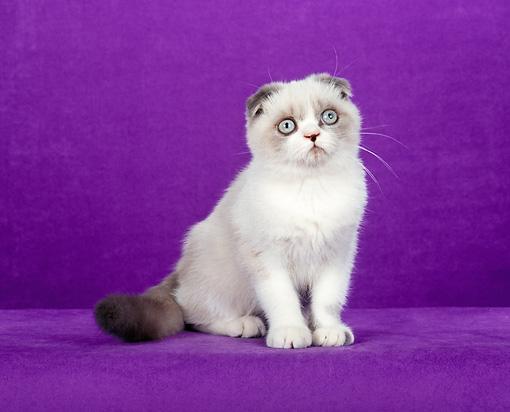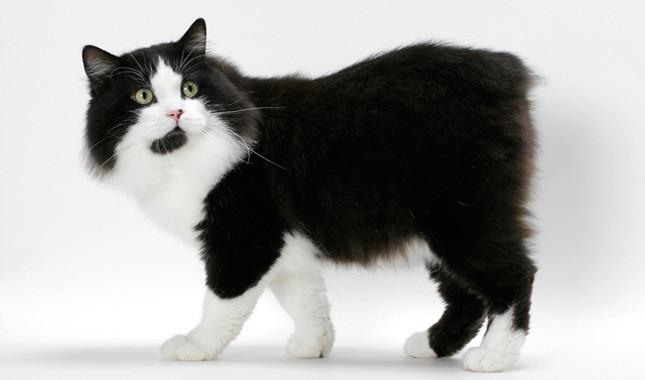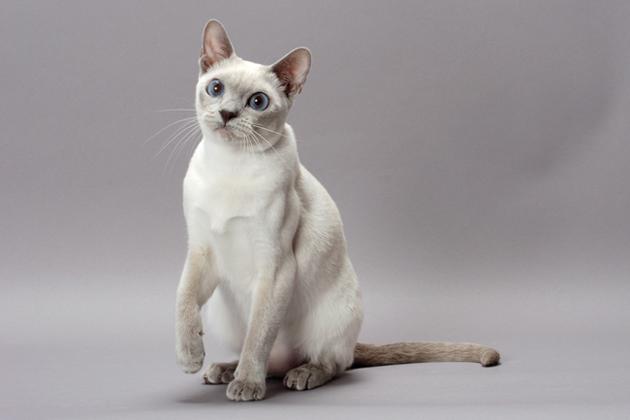Sphynx
The Sphynx is a breed of hairless cat developed in the 60s through the process of selective breeding. Their warm-to-touch soft skin along with a wise and intelligent look all because of their wrinkled skin, make them even more appealing and a perfect choice as house pets.
Quick Information
Physical Appearance & Size
| Body Type: | Medium to large |
| Physical Appearance: | Muscular and heavy built; wedge-shaped head; prominent cheekbones; big ears without any hair; large, lemon-shaped eyes; round-shaped abdomen; nimble, finger-like feet; tapering tail resembling a whip |
| How Much Does it Weigh: | Male: 8-11 lbs, Female: 8-11 lbs |
Colors & Patterns
| Coat Type: | No coat |
| Color: | Black, white, chocolate, red, lavender |
| Eye Color: | Odd-eyed |
| Pattern: | Tabby, tortoiseshell, solid, calico, bicolor, mink |
Other Characteristics
| Lifespan/ Life Expectancy: | 12-16 years |
| Litter Size: | 3 to 5 |
| Behavioral Characteristics: | Friendly, intelligent, inquisitive, loyal, energetic |
| Lap Cat: | Yes |
| Shedding (Do they Shed): | Very low |
| Vocalization: | |
| Good with Children: | Yes |
| Are they Hypoallergenic: | No |
| Country (Where do they come from): | Ontario, Canada |
| Competitive Registration/ Qualification: | CFA, TICA, FIFe, AACA, CCA-CFC, ACFA/CAA |
History
Though hairless cats were mentioned about since long, attempts to develop them commenced not until1966. It all started when a cat with a back-white body color birthed a hairless cat, named Prune by its owner. Prune was backcrossed with its mother, and the resultant mating gave rise to a few naked kittens, though not all, as hairlessness was regarded to be a recessive gene. One Mr. Riyadh Bawa, a student of science who graduated from the Toronto University, purchased some of the hairless cats in the litter and referred to them as Canadian Hairless. He along with his mother who was also a Siamese cat breeder as well as Rita and Kees Teehoves were credited to have determined the hairlessness in the Sphynx. The provisional showing status given to it by the CFA was revoked in the year 1971, as the Cat Fancier’s association felt that these felines had issues with fertility.
There were some initial shortcomings while breeding the Sphynx since they had a limited genetic pool as most of the kittens had died, while some of the females even suffered from convulsions. When an Ontario breeder named Shirley Smith, came across three kittens without hair in her neighborhood in 1978, she brought them home, and five years later send two from the litter named Paloma and Punkie to Hugo Hernandez in the Netherlands. There he crossed them with a Devon Rex and the resultant litter comprised of five kittens in total. However, the foundation stock of this breed is said to develop in Minnesota at Milt and Ethelyn Pearson’s cattery, with the cats Epidermis and Dermis born in the year 1975 and 1976, becoming an essential part of the breeding programme of the Sphynx. Acknowledged by noted associations like the TICA, CFA, ACFA, and GCCF, it has gained immense popularity worldwide, also being bestowed upon with accolades.
The Sphynx Cat Association developed in 2005 with the motive of betterment in this breed.
Does the Sphynx not have any hair at all
Though a hairless breed, the Sphynx cat is not completely devoid of hair. In fact, they have fine down covers that make their skin look smooth just like a chamois. However, you could see light hair on the areas around their nose as well as behind their ears.
Temperament and Personality
- Has an inquisitive nature, which makes owners describe them as childlike or elf-like.
- Enjoys being cuddled in the lap of their masters and even snuggle into bed with them, a trait which earns them the nickname Velcro lap cat.
- Loves greeting guests who may visit its home, and might even go to the extent of pouncing upon their shoulders to display their affection.
- Gets along well with children as well as cat-friendly canines. The presence of another Sphynx in the household would help them to comfort each other during their times of crisis.
- Possesses a great deal of intelligence that helps it to seek shelter for itself anywhere in the house when it gets cold like a sunny window, on tops of televisions or computers as well as a warm blanket.
- Are lovable, amusing everyone with its funny antics, often being clumsy in its attempt to be the center of all attraction.
Who is the Sphynx cat good for
- Those seeking a therapy cat.
- People on the lookout for a “hot water bottle” whom they can cuddle onto and sleep.
- Families seeking for a house cat who is intelligent enough and can even entertain them with their antics.
Care
Though it is devoid of any hair, the Sphynx cat needs to be groomed on a regular basis using a scent-free, vet-approved oil or lotion to keep their skin well-moisturized. Bathing it on a weekly basis is needed to prevent oil from getting clogged in its pores. Cleaning its eyes and ears, trimming its nails as well as brushing its teeth are the other essential grooming measures you need to adapt.
Do not allow your Sphynx to remain in the sunlight for long or never keep it unattended when outdoors, as its bare body could get burnt also increasing the risks of skin damage. They are also unable to conserve the heat in their body well, so always make them wear a sweater or coat during the chilling winters.
Because of their hairlessness, the Sphynx may face challenges as far as their health is concerned. When exposed to the sun for prolonged periods, they could be at risk of having skin cancer. Kittens might even develop respiratory disorders. Hence it is advisable for reputable breeders to prevent sending the baby cats to their homes only after they have attained 14 weeks of age so that by that time they get adjusted to their new environment. Other health conditions they may be susceptible to include hypertrophic cardiomyopathy, and urticaria pigmentosa.
Training
These affectionate and intelligent cats are a delight to train as they would obey their masters to the tee. You can teach them exciting tricks like walking and jumping through a hula hoop. You can use the clicker training method, where a click should be followed by a treat. Once your cat understands this, place a big hula hoop in front of him and stand at the other end with a treat. The urge to get his goodie would make him walk through it. Practicing for a couple of times would make him adept at it, and your pet would cross the hoop the moment he hears the clicker.
Feeding
Feed your Sphinx a good variety of cat food in measured amounts as overeating could put it at the risk of being obese.

